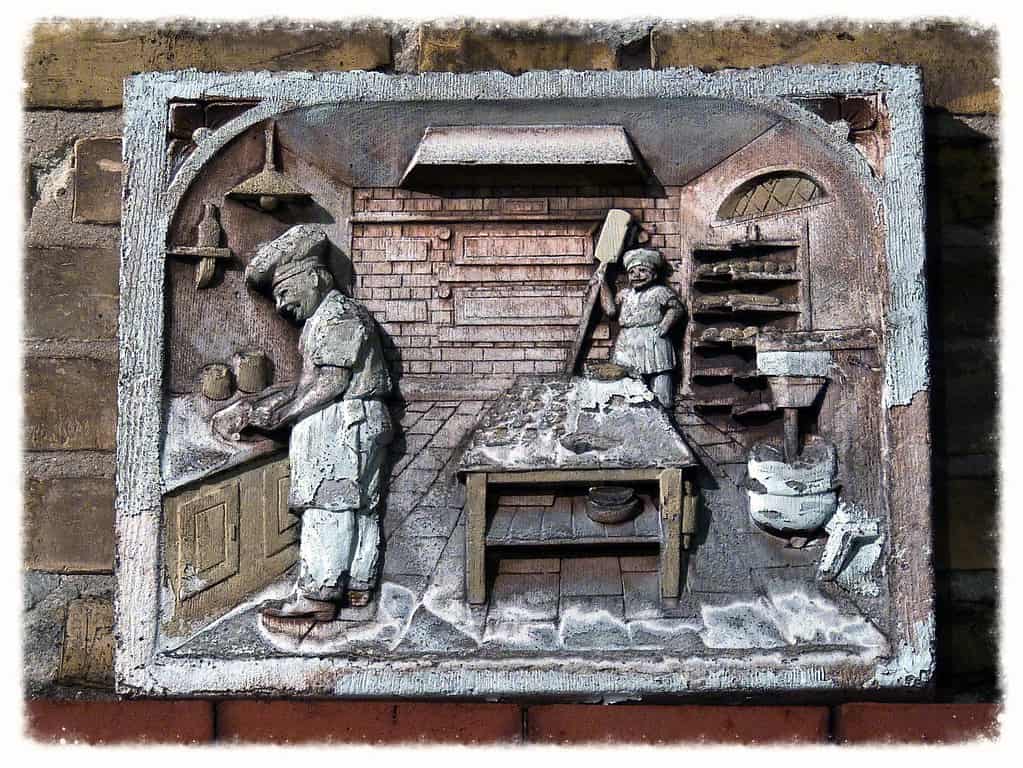Okay, let’s start with the definition of what Baker’s percentage is.
As per ChatGPT 3.5 on 2/21/2024
Baker’s percentage, also known as baker’s formula or baker’s math, is a method used by bakers to express the proportion of ingredients in a recipe in relation to the flour’s weight, which is assigned the value of 100%.
It allows for easy scaling of recipes and provides a consistent framework for comparing different formulations. In Baker’s percentage, each ingredient’s weight is expressed as a percentage of the total flour weight, making it simpler to adjust batch sizes while maintaining consistent ratios of ingredients.
This system is widely used in professional baking and helps bakers achieve precise and consistent results across various recipes and batch sizes.

The baker consensus is that all ingredients are measured by weight, including liquids; they are measured using a consistent unit of measure, either pounds or kilograms. The main ingredient in the Baker’s percentage or Baker’s math formula — in this case, flour — is always considered 100 percent. When two or more flours are used in a formula, their combined total is always considered 100 percent. The weights of all other ingredients are expressed as a percentage of the total flour weight.
But here is my Question
How is the Baker’s percentage for levain (L) calculated? There seem to be different ways of interpreting the general formula of Baker’s percentage for levain. The devil is in the details, and I am unaware there is much consensus in the cottage baking community!
https://www.thefreshloaf.com/node/64591/how-calculate-levain-percentage
https://www.thefreshloaf.com/node/64600/levain-calculation
Bread Baker’s Guild of America (BBGA)
I am not a member of the Bread Baker’s Guild of America. However, the guild has published an authoritative, if not overwhelming, document in their 2009 publication Bread Lines (2009) regarding the formatting of bread formula:
The document’s lead article states, “Baker’s percentages are the key to the Guild’s standardized formula format. A thorough understanding of baker’s percentages is the necessary first step to following the format. Please refer to Tim Healea’s Bread Lines article in Volume 15, Issue 1 (April 2007, pages 8-9) that provides a detailed explanation of how to convert your formula to baker’s percentages.”
Maurizio Leo offers a few helpful words on his blog The Perfect Loaf:
The Perfect Loaf’s Answer
To cut to the chase, I’ll quote Maurizio Leo: “Should I include the sourdough starter flour and water in my calculations? For a formula to be wholly correct and account for all flour and water, the flour and water in the starter should be included. However, I typically do not include them for clarity and ease of use. Instead, I treat the starter as a single, cohesive unit. My starter is included in such a small percentage that the impact of that flour and water on the total formula is minimal. I see this as a tradeoff between complete correctness and clarity.”
I agree with Maurizio Leo that a strict formula for the levain’s Baker’s percentage is a bit cumbersome for most home bakers. Baking sourdough bread is an art more so than a method. Who cares about minute details as long as the bread still comes out great? It isn’t the formula that is right, it is the customer.
However, I use a lot of levain in my baking and prefer the stricter formula in my calculations.
My initial Understanding
After reading Flour, Water, Salt, and Yeast by Ken Forkish, I came to acept that the Baker’s percentage for levain is the amount of flour in the levain expressed as a percentage of the total recipe flour (the sum of the levain’s and the main dough’s flour).
For Example
The levain’s flour of 200g (F) plus the main dough’s flour of 800g (M) amounts to 1000g of total recipe flour (T).
The Baker’s percentage levain, in this case of 400g of 100% hydrated levain (L) comprised of 200g of flour (F) and 200g of water (W), is 20% of the 1000g of total recipe flour (T).
In other words, I treat the levain flour and water as distinct ingredients, not the batch of levain.To do so, I add the levain’s flour (F) to the main dough’s flour (M) for a total recipe flour (T) amount. And I add the levain’s water (W) to the main dough’s water (H) amount to calculate the overall hydration percentage of the final dough (D).
This method aligns with Bread Baker’s Guild of America’s standards and is reflected in my Baker’s percentage calculators on this site. Please give my calculator a try!